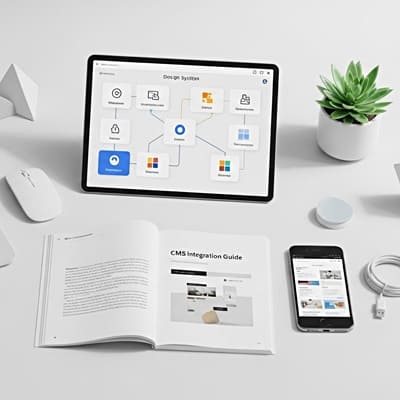Are your financial services struggling to adapt in a digital age? With consumers leaning heavily towards mobile banking, financial institutions face an urgent challenge: how to evolve their offerings to meet rising expectations. This is where a robust mobile banking app can make all the difference. If you want to learn how to effectively create a mobile banking app, you’re in the right place.
In this blog post, we will explore the critical aspects of mobile banking app development for financial institutions, focusing on digital banking solutions, the importance of fintech UX, essential features to include, and the latest trends shaping this space. With the right strategies, your institution can stay ahead of the curve, providing exceptional mobile banking experiences to your users.
Digital Banking Solutions
Digital banking solutions have become paramount for financial institutions aiming to streamline operations and enhance customer interactions. These solutions go beyond traditional banking by integrating technology to provide users with seamless access to various services.
Benefits of Digital Banking Solutions:
- Enhanced Accessibility: Customers can manage their finances anytime and anywhere, leading to higher engagement and customer satisfaction.
- Cost Efficiency: Automating processes reduces operational costs for financial institutions. By minimizing the need for physical branches, banks can allocate resources more effectively.
- Personalized Services: Advanced analytics enable institutions to offer tailored services based on customer behavior and preferences. This personalization fosters customer loyalty and retention.
- Integration with Financial Ecosystems: Digital banking solutions allow for smooth integration with third-party fintech applications. This collaboration enhances the overall value proposition and expands service offerings.
To implement effective digital banking solutions, financial institutions need to assess their current infrastructure, identify gaps, and prioritize the integration of technology that aligns with customer needs. Content and user engagement strategies such as interactive tutorials and community forums can further enhance the adoption of these solutions.
Importance of Fintech UX
In the world of mobile banking apps, user experience (UX) plays a pivotal role in determining the success of the platform. Fintech UX encompasses the design, functionality, and overall experience a user encounters when interacting with banking applications.
Significance of Fintech UX:
- User Retention: A well-designed mobile banking app that prioritizes usability encourages customers to continue using the service. Simple navigation, clear calls-to-action, and a visually appealing interface keep users engaged.
- Reduced Complaint Rates: Ensuring that users can easily find the features they need minimizes frustration and enhances customer support relationships. A positive UX can significantly reduce complaint rates and improve overall satisfaction.
- Increased Trust: A visually appealing and intuitive interface enhances credibility. Users are more likely to trust a platform that is user-friendly and showcases professionalism.
- Feedback and Iteration: Fintech UX advocates user feedback as a cornerstone for improvement. Iterating on design based on user insights can significantly boost app performance and user satisfaction.
Therefore, organizations should prioritize UX design in their mobile banking app development by investing in usability testing, design sprints, and employing strategies that amplify user engagement. Platforms should embrace a user-centered design approach to ensure that the app evolves in tandem with customer needs.
Essential Features of a Mobile Banking App
When developing a mobile banking app for financial institutions, certain essential features should be integrated into the design to ensure a comprehensive user experience while meeting regulatory requirements.
Must-Have Features:
- Secure Login: Multi-factor authentication (MFA) is crucial for ensuring secure access to the app. Biometric logins such as fingerprint or facial recognition add an additional layer of security.
- Transaction History: Users should be able to view a detailed transaction history that includes filters for easy navigation.
- Fund Transfers: In-app fund transfer capabilities should support both internal and external transactions. Instant transfer options enhance user satisfaction.
- Bill Payments: Users expect to pay bills directly from their banking apps. Implementing a simple and secure bill payment system can significantly enhance the app’s value.
- Customer Support: Providing instant access to customer service, whether through live chat options, chatbots, or direct messaging features, ensures that users have the help they need at any time.
- Notifications and Alerts: Real-time alerts for account activities help users stay informed and engaged with their finances. Customizable notifications can enhance user experience even further.
- Budgeting Tools: Features that assist users in budgeting and tracking spending can help increase user engagement and loyalty, fostering a financially savvy customer base.
These features not only enhance user experience but also ensure compliance with relevant regulations, which is critical for maintaining customer trust. Striking a balance between functionality and usability is essential in the development of an effective mobile banking application.
Trends in Mobile Banking App Development
Keeping pace with trends and technological advancements is crucial for financial institutions aiming to excel in mobile banking app development.
Emerging Trends:
- Artificial Intelligence (AI): The integration of AI can provide personalized experiences based on user behavior and preferences. AI chatbots for customer service are becoming increasingly common, enhancing user interaction with the app.
- Blockchain Technology: This technology is revolutionizing secure transactions and mitigating fraud risks. Adopting blockchain can enhance transparency and decrease operational costs for financial transactions.
- Enhanced Security Features: With the rise in cyber threats, financial institutions are adopting advanced encryption techniques, biometric security, and real-time fraud detection systems to protect user data.
- Mobile Wallet Integration: As cashless payments gain momentum, integrating mobile wallets into banking apps allows users to perform transactions securely and conveniently, catering to evolving payment trends.
- Open Banking APIs: These allow third-party developers to build applications and services around financial institutions, fostering innovation and making banking services more accessible.
As the mobile banking landscape continues to evolve, understanding and implementing these trends is crucial for financial institutions. Staying relevant in the competitive banking sector requires a commitment to innovation and an agile approach to app development.
Conclusion
In summary, developing a mobile banking app is no longer optional; it’s a necessity for financial institutions looking to thrive in today’s technology-driven landscape. With comprehensive strategies and best practices in place, you can transform your digital offerings. The integration of digital banking solutions, the emphasis on fintech UX, and the incorporation of essential features ensure a valuable mobile banking experience for users. Additionally, if you adapt to emerging trends, you can remain at the forefront of innovation. Trust WildnetEdge to guide you on this journey, ensuring your institution leads in mobile banking innovation. Ready to take the plunge? Let’s get started!
FAQs
Q1: What are the benefits of using a mobile banking app for financial institutions?
A mobile banking app enhances customer engagement, offers convenience, provides real-time access to services, and fosters customer loyalty.
Q2: How important is fintech UX for mobile banking apps?
Fintech UX is crucial as it determines how easily users can navigate the app, impacting their overall satisfaction and retention.
Q3: What features should I include in my mobile banking app?
Essential features include secure login, transaction history, fund transfers, bill payments, and customer support.
Q4: What are the latest trends in mobile banking app development?
Trends include AI integration for personalized experiences, blockchain for secure transactions, and enhanced security features.
Q5: How can WildnetEdge help in mobile banking app development?
WildnetEdge offers comprehensive solutions, expert guidance, and innovative strategies to develop cutting-edge mobile banking apps tailored to your needs.

Nitin Agarwal is a veteran in custom software development. He is fascinated by how software can turn ideas into real-world solutions. With extensive experience designing scalable and efficient systems, he focuses on creating software that delivers tangible results. Nitin enjoys exploring emerging technologies, taking on challenging projects, and mentoring teams to bring ideas to life. He believes that good software is not just about code; it’s about understanding problems and creating value for users. For him, great software combines thoughtful design, clever engineering, and a clear understanding of the problems it’s meant to solve.
 sales@wildnetedge.com
sales@wildnetedge.com +1 (212) 901 8616
+1 (212) 901 8616 +1 (437) 225-7733
+1 (437) 225-7733































